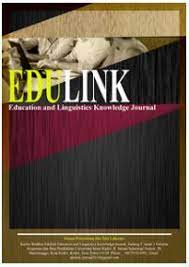Exploring The Factors Influencing Anxiety in ESL Teaching Interns Across Different Education Levels
Abstract
This study examines the anxiety experienced by ESL teacher-interns in Indonesia, specifically those teaching English in primary and secondary schools, and how this anxiety impacts their teaching. As they are still in the process of learning to teach, many teacher-interns feel nervous using English in the classroom. This anxiety can hinder their ability to deliver lessons effectively and engage students. Using a qualitative research approach, the study collected data through interviews with four teacher-interns from different school levels. The findings reveal that anxiety stems from four key factors: lesson preparation, classroom conditions, lack of confidence, and physical health. Many teacher-interns struggle with managing students, planning lessons, and maintaining confidence in their English skills. Large class sizes and student behavior further contribute to their stress. Additionally, some interns fear making mistakes, and teaching becomes even more challenging when they are tired or unwell. The study underscores the importance of improved training, mentorship, and emotional support to help teacher-interns build confidence and enhance their teaching effectiveness.
References
Asif, F. (2017). The anxiety factors among Saudi EFL learners: A study from English language teachers’ perspective. English Language Teaching, 10(6), 160. https://doi.org/10.5539/elt.v10n6p160
Aydin, S. (2008). An investigation on the language anxiety and fear of negative evaluation among Turkish EFL learners. Asian EFL Journal, 30(1), 421-444.
Bilali, O., & Tarusha, F. (2015). Factors influencing the appearance of teaching anxiety to student teachers. European Journal of Social Sciences Education and Research, 3(2), 90.
Coates, J. T., & Thoresen, C. E. (1976). Teacher anxiety: A review with recommendations. Review of Educational Research, 46(2), 159-180.
Creswell, J. W. (2012). Educational research: Planning, conducting, and evaluating quantitative and qualitative research (4th ed.). Boston: Pearson Education, Inc.
Denzin, N., & Lincoln, Y. (2005). Introduction: The discipline and practice of qualitative research. In The SAGE Handbook of Qualitative Research.
Headley, C., & Campbell, M. A. (2013). Teachers’ knowledge of anxiety and identification of excessive anxiety in children. Australian Journal of Teacher Education, 38(5).
Horwitz, E. K. (1996). Even teachers get the blues: Recognizing and alleviating non-native teachers’ feelings of foreign language anxiety. Foreign Language Annals, 29, 365-375.
Horwitz, E. K. (2001). Language anxiety and achievement. Annual Review of Applied Linguistics, 21, 112-126. https://doi.org/10.1017/s0267190501000071
Horwitz, E. K., Horwitz, M. B., & Cope, J. (1986). Foreign language classroom anxiety. The Modern Language Journal, 70(2), 125-132. https://doi.org/10.1111/j.1540-4781.1986.tb05256.x
Kim, S.-Y., & Kim, J.-h. (2004). When the learner becomes a teacher: Foreign language anxiety. English Teaching, 59(1), 165-185.
MacIntyre, P. D. (1995). How does anxiety affect second language learning? A reply to Sparks and Ganschow. The Modern Language Journal, 79(1).
Merç, A. (2011). Sources of foreign language student teacher anxiety: A qualitative inquiry. Turkish Online Journal of Qualitative Inquiry, 2(4), 80-94. Retrieved from http://www.dergipark.ulakbim.gov.tr/tojqi/article/view/5000093463
Miles, M. B., Huberman, A. M., & Saldana, J. (1994). Qualitative data analysis: An expanded sourcebook (2nd ed.). Thousand Oaks: SAGE Publications.
Öztürk, G. (2016). Foreign language teaching anxiety among non-native teachers of English: A sample from Turkey. Sakarya University Journal of Education. https://doi.org/10.19126/suje.220180
Passer, W. M., & Smith, R. E. (2009). Psychology: The science of mind and behaviour. New York: McGraw Hill.
Prayong, K., & Rapeeporn, S. (2012, November). EFL teacher’s anxiety in using English in teaching in the language classroom. International Journal of Social Science and Humanity, 2.
Rachman, S. (2004). Anxiety (2nd ed.). Taylor & Francis Inc.
Sherman, R. R. (1992). The idea of qualitative research. CUHK Education Journal, 20. Retrieved from http://citeseerx.ist.psu.edu/viewdoc/download?doi=10.1.1.131.9205&rep=rep1&type=pdf
Sugiyono. (2016). Metode penelitian kuantitatif, kualitatif dan R&D. Bandung: PT Alfabet.
Wilt, J., Oehlberg, K., & Revelle, W. (2011). Personality and individual differences. Department of Psychology, Northwestern University. Retrieved from www.elsevier.com/locate/paid
Yoon, T. (2012). Teaching English through English: Exploring anxiety in non-native pre-service ESL teachers. Theory and Practice in Language Studies, 2(6). https://doi.org/10.4304/tpls.2.6.1099-1107

This work is licensed under a Creative Commons Attribution 4.0 International License.
This work is licensed under a Creative Commons Attribution License























 This work is licensed under a
This work is licensed under a  https://orcid.org/0000-0001-9166-6040
https://orcid.org/0000-0001-9166-6040
